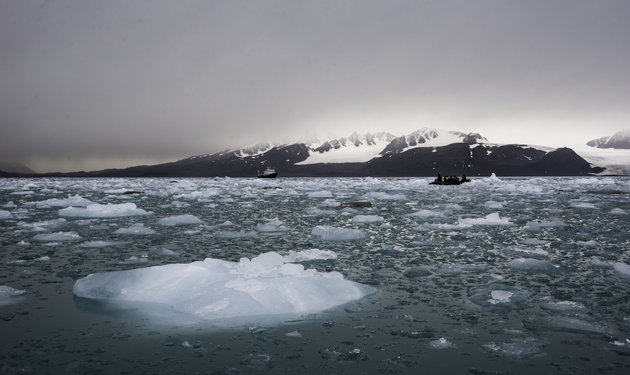Source: huffingtonpost.co.uk
Published: August 1, 2017
They might be small, but they are proving to be mighty, as scientists have discovered a breed of microbes living in Antarctic glaciers are protecting the planet from worsening global warming.
The previously unrecognised methane-eating microbes, found 800 metres below the ice in subglacial reservoirs, are responsible for destroying 99% of methane that could otherwise be released into the atmosphere.

By wildestanimal via Getty Images
Scientists have been particularly concerned about methane levels at the poles, as the gas has a warming greenhouse effect that is 30 times that of carbon dioxide.
And the retreating Antarctic glaciers are storing enough of the gas to fill more than a billion hot air balloons.
Brent Christner, co-author on the study, said: “There’s been a lot of concern about the amount of methane that’s beneath these ice sheets because we don’t know exactly what’s going to happen to it.”
Currently, when the gas is trapped in the ice it is not harming the environment, but as the world warms and the glaciers retreat, it is released into the surrounding atmosphere.
So the new study of Whillans Lake, from the University of Florida, wanted to see exactly how the microbes could be playing a role in saving the environment from the full impact of the gas escaping.
“This is an environment that most people look at and don’t think it could ever really directly impact us…but this is a process that could have climatic implications,” said Christner.
Although this study has shown that the microbes are doing a good job, eating 99% of the methane, they do not have proof that this is a widespread phenomenon.
And future studies will need to assess whether this process is pervasive across subglacial lakes in Antarctica.
Scientists have previously warned, as reported by HuffPost UK, that human’s attempts to curb carbon dioxide emissions could be undermined by the proliferation of methane.
And with methane gas emissions now growing faster now than at any time in the last two decades – emissions began to surge in 2007 and shot up in 2014 and 2015 by 10 parts per billion each year – they are threatening efforts to limit global warming to two degrees celsius.
While the cause of the spike is unclear, scientists suspect it comes from agricultural sources around the tropics, like rice paddies and cattle pastures.
